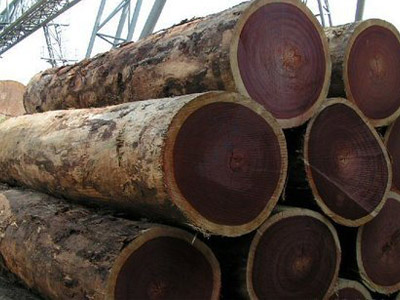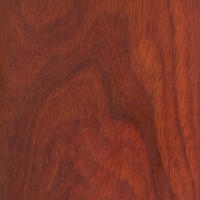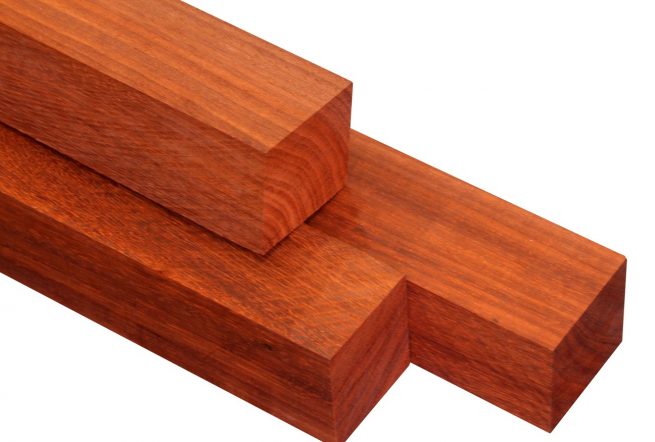PADAUK
- General Details
Origin :
Central and tropical west AfricaColor or Appearance :
Heartwood color can vary, ranging from a pale pinkish orange to a deep brownish red. Most pieces tend to start reddish orange when freshly cut, darkening substantially over time to a reddish/purplish brown (some lighter pieces age to a grayish brown). See the article Preventing Color Changes in Exotic Woods for more information.Grain/Texture :
Grain is usually straight, but can sometimes be interlocked. With a coarse, open texture and good natural luster.Endgrain :
Diffuse-porous; large to very large pores in no specific arrangement, very few; solitary and radial multiples of 2-3; mineral deposits occasionally present; growth rings indistinct; narrow rays not visible without lens, fairly close to close spacing; parenchyma diffuse-in-aggregates, winged, confluent, and banded.Rot Resistance :
Has excellent decay resistance, and is rated as durable to very durable. Padauk is also reported to be resistant to termites and other insects.Workability :
Overall Padauk is easy to work; tearout may also occur during planing on quartersawn or interlocked grain. Padauk turns, glues, and finishes well.Odor :
Padauk has a faint, pleasing scent while being worked.Allergies / Toxicity :
Although severe reactions are quite uncommon, Padauk has been reported as a sensitizer. Usually most common reactions simply include eye, skin, and respiratory irritation. See the articles Wood Allergies and Toxicity and Wood Dust Safety for more information.Comman Uses :
Veneer, flooring, turned objects, musical instruments, furniture, tool handles, and other small specialty wood objects. - Technical Info
Tree Size :
100-130 ft (30-40 m) tall, 2-4 ft (.6-1.2 m) trunk diameterAverage Dried Weight :
47 lbs/ft3 (745 kg/m3)Specific Gravity (Basic, 12% MC) :
.61, .75Janka Hardness :
1,970 lbf (8,760 N)Modulus of Rupture :
16,830 lbf/in2 (116.0 MPa)Elastic Modulus :
1,700,000 lbf/in2 (11.72 GPa)Crushing Strength :
8,130 lbf/in2 (56.0 MPa)Shrinkage :
Radial: 3.3%, Tangential: 5.2%, Volumetric: 7.6%, T/R Ratio: 1.6



